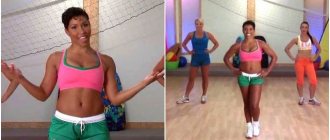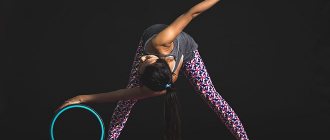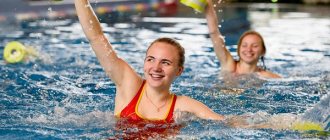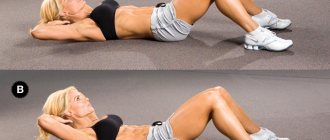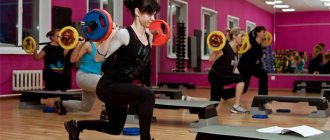Kettlebell training programs will invigorate you like nothing else. Powerful complexes from kettlebell masters Pavel Tsatsouline and Sergei Rudnev can take you to a new level and pump up your body.
You need to be very advanced in terms of pumping muscles with weights to understand the beauty of kettlebell lifting. However, you should try different options before drawing any conclusions. You know, this is a very exciting and intriguing activity!
The training program will be presented in 2 versions:
- from Pavel Tsatsouline, Master of Sports of the USSR, physical training instructor for Soviet special forces, popularizer of kettlebell training in the USA, author of books.
- from Sergei Rudnev, MSMK, five-time World champion in kettlebell lifting, president of the international academy of kettlebell lifting and fitness.
Learn from the best, they are always ready to instruct you in this sport. After all, kettlebell exercises are exercises and training programs that can not only increase your muscle mass, they will make your body more resilient and strong.
Training program from Pavel Tsatsouline
Kettlebell training is something. The number of movements with weights significantly exceeds other equipment: dumbbells, exercise machines, free weights.
Their design involves a number of interesting exercises. The kettlebell combines cardio and strength training into a powerful combination. It's a rhythmic element that does wonders for your body balance and really raises your heart rate above anything else. Plus, just 10-15 minutes with weights and you'll tear yourself apart.
Most of Pavel's videos are currently only available in English, however they give an excellent overview of the movement techniques.
This complex is performed with two weights. According to the author, the program will force you to discover your body in a new way, and build muscle mass in the process.
In total, you will need to repeat four exercises with a pair of kettlebells:
- Clean
- Press
- Squat
- Renegade Row
On Monday/Tuesday, we perform workout A with a pair of kettlebells, with which you are able to bench press two 6-8 times after one clean, and do a pyramid press, doing the rest of the exercises 1 time in each set.
A new minimum program for Russian kettlebell lifting. Summary[edit | edit code]
- Twice a week, alternate between swinging and jogging for 12 minutes.
- Don't overexert yourself. Only put yourself out there when you're ready.
- The purpose of running is to relieve muscle tension and remove lactic acid. Running is an active recreation.
- Twice a week, perform Turkish get-ups for 5 minutes, alternating hands.
- Focus on technique, not quantity. Don't count repetitions or increase their number.
- Approximate plan for the week: Monday, Thursday - swings; Tuesday, Friday - Turkish rises. Or Monday, Thursday - Turkish rises; Tuesday, Friday - swing. You can add a day for swings or Turkish get-ups.
- Pre-workout: 10 minutes of wall-facing squats, halo, and swings. See details.
- If you are still an inexperienced athlete, do not lift weights on your free days and read the article Kettlebell Training: Basics of Technique.
Program from Pavel Tsapulin - A
Circular - 9 circles
Hanging weight lifts
- 1 set x 1 rep
- Body part: Shoulders Equipment: Kettlebells
Military two-hand kettlebell press
- 1 set of 1-2-3-4-5-4-3-2-1 reps
- Body part: Shoulders Equipment: Kettlebells
Deep squats with kettlebells
- 1 set x 1 rep
- Body part: Quadriceps Equipment: Kettlebells
Kettlebell row while lying down
- 1 set x 1 rep
- Body Part: Middle Back Equipment: Kettlebells
Russian kettlebell swings
- 5 sets of 20 reps
- Body part: Hamstrings Equipment: Kettlebells
Add to Calendar * Add to My Workouts * Print Workout
* — The service is in beta testing
In the pyramid press, we go as high as possible to find the number of repetitions beyond which you simply cannot press.
On Wednesday we return to our training, but this time we perform squats using a “pyramid”:
Why is it so important to adhere to the regime?
We all eat poorly to varying degrees, sleep little, and think that we really relax by lying on the couch for hours and staring at the screen. Don’t be surprised then that your results don’t improve, you don’t have the strength to train because the coach gives you a difficult plan, you want to sleep, it’s all spring’s fault, etc. I know weightlifters who work at night and then come to train, others eat three times a day and wonder why they don’t gain weight, others unreasonably overdo the weight of the barbell, and then everything hurts and the special part of the workout doesn’t work.
Immediately determine for yourself whether you are an athlete or doing physical education “for yourself” with weights, what you want to achieve, set your priorities. Do you have goals: fulfill the standard, win a competition, update a personal record? Yes, go ahead boldly, but true adherence to the regime will require some sacrifices. It may seem so at first, but you will gain much more. Ensure your athletic longevity by making the regime a regular way of life.
Sports mode combines exercise, rest, sleep and nutrition. All this is needed to “reanimate” wasted resources: strength, energy, muscles, metabolic substrates.
Program from Pavel Tsapulin - B
Circular - 11 circles
Hanging weight lifts
- 1 set x 1 rep
- Body part: Shoulders Equipment: Kettlebells
Military two-hand kettlebell press
- 1 set x 1 rep
- Body part: Shoulders Equipment: Kettlebells
Deep squats with kettlebells
- 1 set of 1-2-3-4-5-6-5-4-3-2-1 reps
- Body part: Quadriceps Equipment: Kettlebells
Kettlebell row while lying down
- 1 set x 1 rep
- Body Part: Middle Back Equipment: Kettlebells
One-arm kettlebell snatch
- 5 minutes 1 set
- Body part: Shoulders Equipment: Kettlebells
Add to Calendar * Add to My Workouts * Print Workout
* — The service is in beta testing
Do as many maximum repetitions of pyramid squats as you can handle. And aim to do a 5 minute dash. You can change your hand, for example, every 10 times.
It is recommended to take the weight for the snatch less than the working one. Exactly the kind that will allow you to make jerks for a long time. If at first you don’t succeed in five minutes, don’t give up.
Training schedule
Train on Mondays, Wednesdays and Fridays, changing the order of the bench press and squat pyramid:
| Week 1, 3 | Week 2, 4 |
| Monday – A/press (X) Wednesday – B/squats (Y) Friday – A/press (X) | Monday – B/squats (Y) Wednesday – A/press (X) Friday – B/squats (Y) |
You will perform the same number of MAXIMUM reps (X and Y) to “fix” the pyramids for 4 weeks. In the example workouts, these are 5 presses and 6 squats.
In the fifth week we increase the MAXIMUM by +1 (total 6 and 7)
In the sixth week we increase the MAXIMUM by +2 from the base (total 7 and 8).
| Week 5 | Week 6 |
| Monday – A/press (X+1) Wednesday – B / squats (Y+1) Friday – A/press (X+1) | Monday – B / squats (Y+2) Wednesday – A/press (X+2) Friday – B / squats (Y+2) |
That's all. In six weeks, you will see your own gains in meat, and you will also feel your body in a new way. Unload yourself with a week of fun and easy training and you are ready for strength training that uses the “pyramid” (1, 2, 3, 2, 1).
These six-week workouts can be scheduled several times a year. Remember that you need to eat a good and balanced diet in order to gain quality mass.
Rest
You can rest between approaches as much as you see fit. A good guideline is restoring breathing. Rest one day between workouts.
Maximum weight training
When done correctly using technique, a heavy one-rep set is, contrary to popular belief, an extremely effective method of gaining massive and strong muscles. Here are two different ways in which this system of sets (approaches) of one repetition is applied.
Rest-pause method: the athlete takes the maximum weight that he can lift for 2-3 repetitions. This exercise will be considered complete until complete muscle failure occurs and the ability to perform even one repetition technically correctly occurs. Rest between micro-series is 10-15 seconds.
High volume training method : the athlete takes the working weight at the rate of 90% of the maximum, and performs 5 repetitions with it, with a rest of 10-15 seconds between approaches. As in the first option, the training will be considered complete when complete muscle failure occurs (inability to perform a technically correct exercise for one repetition).
Biathlon - Clean and Jerk
Two-handed kettlebell push
- Rate by minute: 9, 10, 10, 3
- Body part: Shoulders Equipment: Kettlebells
Two-handed kettlebell push
- Tempo by minute: 11, 11, 11, 11, 12, 12, 6
- Body part: Shoulders Equipment: Kettlebells
Treadmill workout
- 4 km in the third zone
- Body part: Quadriceps Equipment: Exercise
Add to Calendar * Add to My Workouts * Print Workout
* — The service is in beta testing
Stretching - 15-20 minutes after the complex.
Balanced diet
Kettlebell lifting, which develops endurance, with a large number of repetitions in exercises, requires regular balanced nutrition. It is necessary that the supply of nutrients covers the costs. How to do it?
A balanced diet implies a sufficient intake of proteins, fats, carbohydrates, vitamins and minerals from the daily diet. The ratio of proteins, fats and carbohydrates will vary depending on what your goal is: gaining weight, maintaining it or cutting. On average, if we are not losing or gaining weight, we weightlifters need about 50% carbohydrates, 30% protein and 20% fat during the day. Without calorie tables, these numbers don’t mean anything, but knowing how much and what we get from food is useful for a weightlifter in terms of controlling and adjusting weight before competitions.
If you don’t want to pick or dry, much less bother with calculations, just follow these rules:
- Eat regularly. Regularly - this is not daily, this is 4-6 times a day in sufficient portions (which means not overeating and not leaving the table half-starved).
- The break between “approaches” is no more than 4 hours, optimally 3-3.5 hours. Long intervals trigger catabolic processes (simply destructive), lead to stagnation in the gallbladder and can lead to diseases of the digestive system.
- Breakfast is the most important thing! Never miss it. Breakfast should be nutritious, but light. Oatmeal or multigrain porridge with optional additives is ideal: milk, butter (preferably vegetable oil, for example, flaxseed with a lot of healthy omega acids), dried fruits. In addition to oatmeal, you can eat other porridge, omelet, baked goods with a little butter, cheese, and add fruit to all this.
- In the next 2-3 meals, eat complex, or slow, carbohydrates with proteins (meat, poultry, fish) + raw vegetables, vegetable salads, herbs.
- The last meal (about 2 hours before bedtime) is predominantly protein; cottage cheese and unsweetened fermented milk drinks are perfect for this.
- During the day, you can include small “healthy” snacks in your diet: fruits, dried fruits, nuts, yoghurts.
- Before training, eat 1.5-2 hours before training. Immediately after class, you need to throw in some high-glycemic foods (those that quickly increase blood sugar): sweet fruits, raisins, baked goods, cookies, muesli bars, rice - about 50 g of carbohydrates (or 0.7 g/kg body weight). This will speed up the recovery of glycogen in the muscles and close the notorious “carbohydrate window”, if it really exists. For example, I always have a couple of bananas in my bag; I eat them right in the locker room or on the way from training. I often drink half a liter of yogurt with a loaf of bread – that’s also great.
- Try not to eat harmful and “empty” foods that simply fill your stomach and do not provide any benefit (sausage, cakes, candies, canned vegetables), limit to a minimum, or better yet, completely eliminate fried foods, fatty and spicy deli meats, smoked meats and alcohol.
Now about something equally important – drinking regime . An athlete needs much more water than an ordinary person. The recommended 2 liters is the minimum you can afford. Drink simple purified non-carbonated water between meals, 20-30 minutes before and 30-40 minutes after, drink a glass of water on an empty stomach after waking up, this prepares the digestive tract well for breakfast.
- You can and should drink water during training! These should be frequent doses of 2-3 sips, do not drink in one gulp, otherwise the water gurgling in the stomach will greatly interfere and push and tear the weights.
- During classes, a weight lifter loses not only liquid, but also minerals through sweat. Replenish lost electrolytes by drinking tomato or fruit juices. In case of excessive sweating, heavy training, especially in a stuffy room, drink isotonic drinks before and after cross-country runs. This will ensure rehydration and help the work of your muscles, and the most important of them - the heart muscle, and will prevent rhythm and metabolic disturbances in the myocardium, which are often found among athletes.
- By the way, isotonic water can be easily prepared at home. To do this, dissolve a pinch of salt (1 g) and 20 g of sugar or honey (level tablespoon) in 50 ml of warm water, add 30 ml of lemon juice and then 350 ml of cold water.
Combined - Snatch
Circular - 10 laps
One-arm kettlebell snatch
- 1 set of 10 reps
- Body part: Shoulders Equipment: Kettlebells
Attention: on each hand, rest 30 seconds
Swing kettlebells with two hands
- 1 set of 20 reps
- Body part: Hamstrings Equipment: Kettlebells
Treadmill workout
- 6 km in the second zone
- Body part: Quadriceps Equipment: Exercise
Add to Calendar * Add to My Workouts * Print Workout
* — The service is in beta testing
Some mistakes made by beginner weightlifters when performing the kettlebell snatch exercise and ways to eliminate them are discussed in the video below from Sergei Rudnev.
Shoes for training
Most athletes, bodybuilders in the gym, wear shoes that are not at all suitable for weight training. You need good shoes that are comfortable and safe. The ankle must be clearly fixed to avoid various sprains when performing heavy squats, leg presses, etc.
In addition, the non-slip surface of the sole and high sides of the shoes will also help you avoid all kinds of ankle injuries. Currently, the choice of inexpensive, up to $100, specialized shoes for bodybuilding is enormous. Manufacturers are striving to more and more protect the athlete from injury; you just need to enter a query into the search engine “shoes for bodybuilding”, and you can easily find the pair of shoes you need for working out in the gym.
Gym Shoes
Additional exercises in the program
Let's look at a few additional exercises for beginners. Kettlebell exercises are definitely not for weaklings. Their essence is precisely to make you stronger and more resilient.
Swing with one hand
It's a little like jumping rope, but with weights. Start with a light weight of 12-16 kg. Take it with both hands and swing it between your legs, then lift it to eye level and lower it back down. This movement is one of the great muscle-building moves you can do in the gym.
It is not intended for the upper body. If you do it right, it means your hips, the backs of your legs and your core are working. You can swing the swing with one hand (one at a time).
Bent-over row
Performing kettlebell deadlifts is a great way to replace a barbell while using less weight. Take a 16 kg weight and place it between your legs. Without arching your lower back, with your legs bent and your chest open, grab the kettlebell and straighten up, squeezing your buttocks and abs.
Once you improve your strength, try to keep your legs straight but not tense. Alternatively, you can do alternate kettlebell rows.
Alternating bent-over kettlebell row
Shoulder press
Doing kettlebell presses will strengthen your upper body and protect your shoulders. Hold a 16 kg weight with one hand, resting on the biceps of a bent elbow, pressed close to the body. Lift it up above your head and, controlling the weight, lower it. Repeat.
Make sure you hold the kettlebell firmly so it won't slip or fall. Such actions will make your shoulder more dynamic than when exercising with dumbbells. Balance will develop agility and increase strength. For seated variations that will further develop body balance, you will need a special ball and this set.
Lunges with weight transfer
Adding weights to lunges is a great way to work your legs and core. Take 16 or 32 kg weights in both hands or try to throw the same one between them. Lunge back with your left leg. Now throw the weight below and catch it with your right hand. Step back.
Lunges with weights under the foot
Repeat the movement for 2 minutes, smoothly and quickly throwing the weights back and forth.
Chest Press
This is the most difficult movement for a person, which Laird Hamilton teaches you to do with kettlebells. Here's how to do it: Grab two matching weights. Lie on your back on a bench or on a balance ball (this will make the exercise more difficult), as if you were going to do a bench press.
Now turn the weights in your hands so that the weight is facing the ceiling, and control their balance as you push them up and down. Watch the traffic. You'll be surprised how difficult it is to keep track of each weight individually.
How to structure your workouts and how to train strength
Of course, the approach to training depends on the level of the athlete. In order to answer the question “how to train strength” more or less competently, I will conditionally divide weight lifters into 3 groups.
- Beginners (without ranks, junior ranks) - poor general physical fitness and irrational technique with weights.
- Amateurs (senior categories) - good physical fitness and rational, but imperfect technique with weights.
- Close to professionals (CCM, MS) - strong general physical fitness; rational, close to perfect technique with weights.
For the first group, you don’t have to go too deep into this issue. You still need to work on your strength for a very long time until it reaches a certain level. Work specifically on maximum strength, increase weights, strengthen the muscle corset. Just for beginners, you can read “strength training for a kettlebell lifter,” it contains all the necessary explanations and exercises.
For amateurs, strength training is still important as an integral part of training. It all depends on the specific problems. If a weightlifter simply cannot stand up to the end, he cannot withstand these loads and simply breaks under the weights, but at the same time he somehow achieves endurance. In this case, you definitely need to devote a lot of time to strength training. Raise weights in basic exercises to a certain level. Just set some kind of bar for yourself and strive for it.
For professional weightlifters, a completely different approach. They have already reached a certain level of strength, and then they work on performance. For example, my strength maxima have been standing still for several years. At the same time, results in kettlebell lifting are constantly growing. The main thing is to get to this point, and then begin to learn to use your power for a long time.
In other words, the weightlifter needs to calculate the level of strength he needs for normal training with working kettlebells and not strive to increase strength beyond this point.
If you stand confidently with 32kg kettlebells and are sure that you have good strength indicators in basic exercises, then try not to focus more on increasing strength. Work in sets of high reps (15 to 30). Increase your performance, increase your productivity. Everything is very simple. Time and energy resources are limited, so try to use them to maximum advantage!
I have prepared a small graph for you, which highlights the dependence of maximum strength and strength endurance (as well as general endurance) on the level of physical fitness, expressed in kettlebell lifting categories. This is for better perception.
You can notice that at first the training is based on the development of general endurance. It has even been scientifically proven that athletes with a good endurance base achieve good results in kettlebell lifting better and faster. Therefore, in the beginning you need to devote a lot of time to developing this quality.
Preface about the author of the program
Pavel Tsatsoulin is a master of sports of the USSR, born on August 23, 1969 in Minsk, a former physical training instructor for Soviet special forces, now living in the USA.
In 1998, Pavel published his first article “Vodka, cucumber pickle, kettlebell lifting and other Russian entertainment” in MILO, a magazine for those interested in strength sports.
In 2001, Pavel’s book “The Russian Kettlebell Challenge” was published, and Pavel became a leading kettlebell lifting instructor in the USA. A few years later, the book “Introduction to Kettlebell Fitness” was published, and a little later, “Return to Kettlebells!” In the USA he is called the “King of Weights”.
Pavel worked as an instructor for the US Marine Corps, US Secret Service and Navy SEALs.

